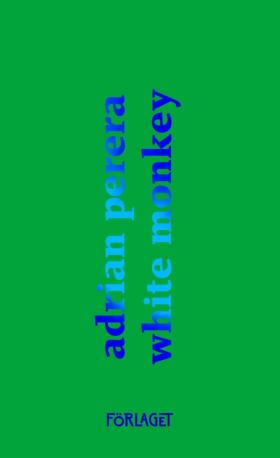
White Monkey
by Adrian Perera
reviewed by Brad Harmon
Adrian Perera’s book of narrative poetry White Monkey has been recognised as one of the first books written by a Finnish author outside the ethnic mainstream to address the structural racism and hegemonic whiteness that exist throughout the Nordic nations. Other authors tackling similar themes include Athena Farrokhzad, Jonas Hassen Khemiri, Johannes Anyuru, Bertrand Besigye, Christina Hagen, and Dan Andersen. Like Perera, these writers (re)present a social taboo in the Nordic nations: race. Race is never a simple or easy topic to discuss, but the unique Nordic trajectory of the discourses around the issue (for instance, the term ‘race’ does not feature in Swedish anti-discrimination policies) makes their work all the more profound and biting for being written and released in a social milieu that is actively resistant to confronting its own problematic relationship with racial issues.
Generally speaking, mainstream Nordic culture views itself as outside the ‘race issue’, claiming either that there is no race issue or that even if there were, it would be someone else’s fault. The issue has been discussed in depth by scholars such as Michael McEachrane and Ylva Habel. These attitudes are clearly represented and set on the white page by Perera. When the speaker’s mother invites guests and tells her son that she and he must avoid being different, such as by throwing out her usual spices in favour of those from the Finnish cookbooks, the speaker relays her comment to the guests, who proudly say ‘Vi ser inga färger,’ (‘We see no colours’).
The speaker is the son of a white, implicitly Finnish father and a non-white Sri Lankan mother. Most of the text adopts the son’s perspective, although it occasionally switches voices to the mother or father. Differences of gender, generation and class are uncovered and left for profound rumination rather than critical discussion. For example, the speaker is several times asked what he thinks of Finland, but he never answers the question, instead returning it to the questioner. He is exoticised and objectified by classmates (confirmed by a journalist who personifies hegemonic whiteness): ‘Jag har en vän från Afrika, / jag vill att du ska veta / att jag inte tänker så / om dig’ (’I have a friend from Africa, / I want you to know / that I don’t think like that / about you’). He experiences everyday racism: ‘Varje gång jag går på fest / tvingas jag utreda mitt släktträd. // Efter några glas fråga alla “Varifrån är du // egentligen?” ’ (‘Every time I go to a party / I’m obliged to explain my family tree. // After a few glasses everyone asks, “Where are you from // really?” ’).
Unsurprisingly, disidentification ensues. Though the speaker is not entirely alienated by society, he is instead permanently liminal and disaffected, telling of the discomfort caused by not having it as bad as others, for example a friend who seems to be the only other person to understand the speaker’s struggles: ‘Det är vitheten som förstört din mor, / det vita privilegiet, / såna som jag … “Det är jag som förstör världen. / Allt är mitt fel. / Allt.” ’ (‘It is whiteness that destroyed your mom, / white privilege / people like me … It’s me who’s destroying the world / Everything is my fault. / Everything.’) Throughout this short collection, multiple voices – of people who may not normally be heard or listened to – are articulated through the speaker, their experiences presented in a sparse language that combines the power of poetry with the realism of a narrative.

White Monkey
Förlaget (Finland), 2017
60 pages
Foreign rights: Adrian Perera
White Monkey was awarded the Svenska Yle Literature Prize for 2017
